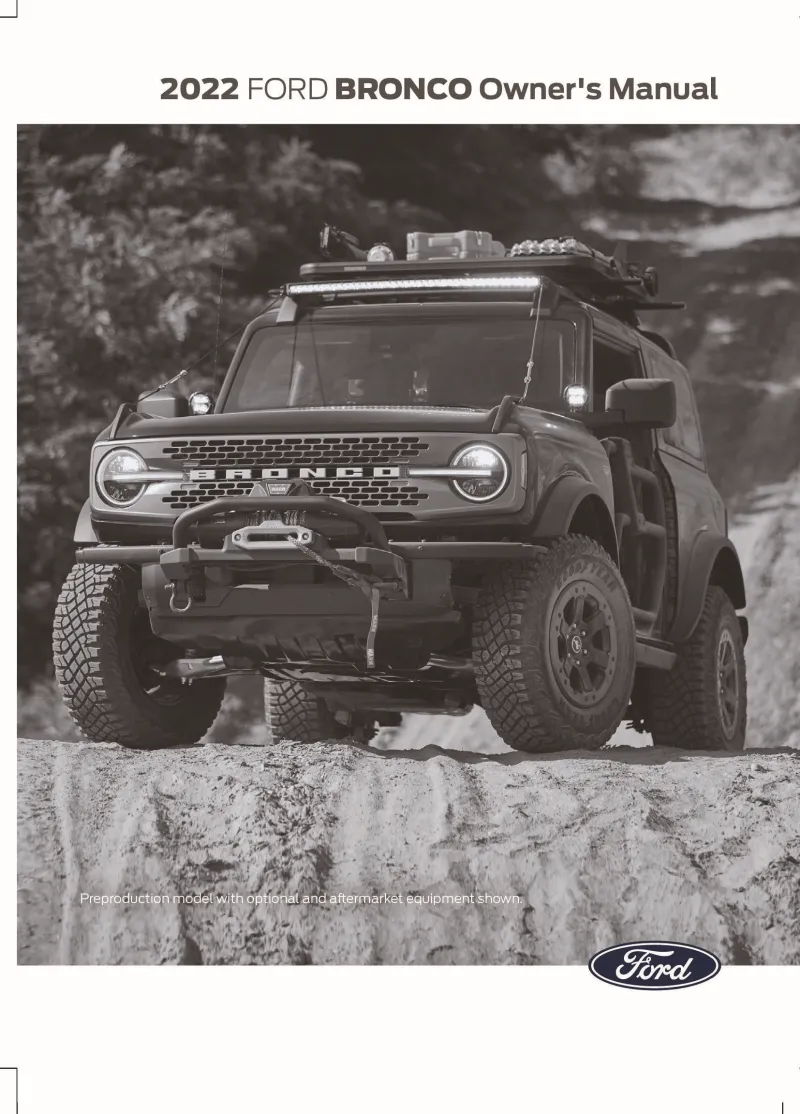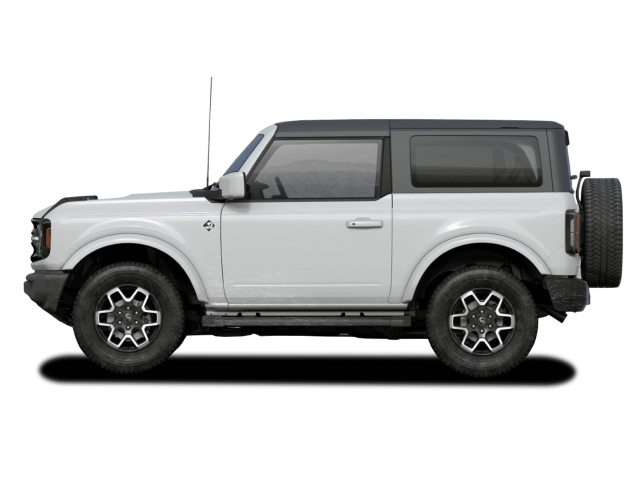2022 Ford Bronco Owner's Manual

Table of Contents
2022 Ford Bronco Overview
Introduction
The 2022 Ford Bronco marks a triumphant return of the storied off-road SUV, blending rugged capability with modern technology and classic aesthetics. Designed for adventure enthusiasts, the Bronco showcases a robust build, all-terrain capability, and a customizable nature that can handle everything from rocky trails to urban streets. This iconic vehicle offers both two- and four-door variants, ensuring that it caters to a wide array of lifestyles and preferences.
Powertrains
The 2022 Ford Bronco offers a choice of two powerful engines: a 2.3-liter EcoBoost inline-four producing 270 horsepower and 310 lb-ft of torque, and a more robust 2.7-liter EcoBoost V6 generating 310 horsepower and 400 lb-ft of torque. Both engines are paired with a 10-speed automatic transmission, providing versatility and precision in different driving conditions. With available four-wheel-drive systems, including advanced G.O.A.T. modes (Goes Over Any Type of Terrain), the Bronco ensures superior traction control and off-road performance.
Trims
The 2022 Bronco comes in several trims, including the base model, Big Bend, Outer Banks, Badlands, and the high-performance Wildtrak and First Edition. Each trim level offers unique features, capabilities, and styles, allowing buyers to select the Bronco that best fits their lifestyle. With customizable options, including various wheel designs, roof configurations, and interior finishes, the Bronco provides ample opportunity for personal expression.
Features
Inside, the 2022 Ford Bronco balances ruggedness with modern comfort, featuring a user-friendly infotainment system powered by Ford's SYNC 4 technology and a weatherproof design for outdoor adventures. Standard safety features include Ford Co-Pilot360, providing drivers with an advanced array of driver-assist technologies. Additionally, ample cargo space and modular accessory options enhance the vehicle's utility, making it an ideal companion for both daily errands and weekend escapades.
Owner's Manual
The 2022 Ford Bronco comes with a comprehensive owner's manual that serves as a vital resource for new owners. It includes detailed information on vehicle operations, maintenance, and troubleshooting, ensuring that drivers can maximize their Bronco experience. The manual is designed to be intuitive and informative, allowing for easy navigation and understanding of all the advanced features available in this iconic SUV.
User manual download
The Ford Bronco owner manual for the 2022 model year is to be found in PDF downloadable format on this page. The owner manual for the model year 2022 is free and in English, but the repair manuals are usually not easy to get and may cost more.
Manual Questions
Fill the form below and someone will help you!

